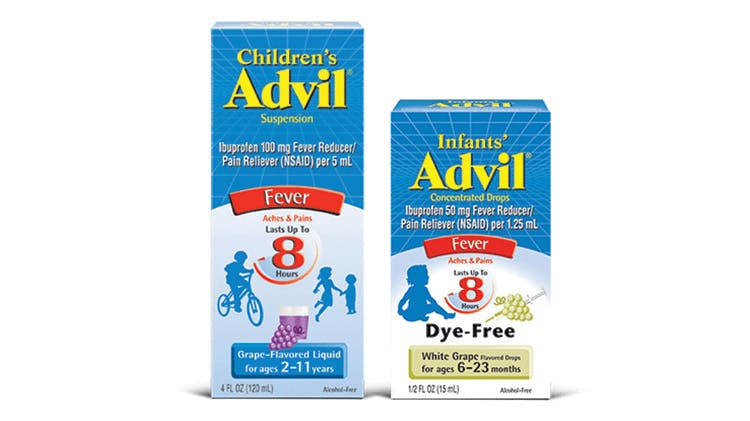Fever in Children: Overview

Children’s fever
In children, body temperature can vary, depending on age and activity level. Infants tend to have higher temperatures than older children. Generally, these are considered true fevers in children:
- Rectal reading of above 100.4°F
- Oral reading of above 99°F
Infants younger than 2 months of age who have a fever need immediate medical attention, even if they appear well and display no other symptoms.
In a healthy afebrile child, the hypothalamic thermoregulatory center of the brain regulates body temperature by balancing the heat produced during metabolism and that which is released during respiration and evaporation.
However, when this balance is offset due to different reasons, fever sets in.
What is fever?
Read more about fever in children
How do children present?
Refresh your knowledge on the signs and symptoms of fever in children and learn about “red flag” symptoms that require medical attention.

Children’s & Infants’ Advil
Learn about the trusted safety profile of Children’s and Infants’ Advil, with superior fever relief.
What can you recommend to relieve fever in children?
Find out more about both nonpharmacologic and pharmacologic treatments.
Children’s & Infants’ Advil drug facts and dosing
The drug facts contain all you need to know about Children’s and Infants’ Advil as well as warnings on concomitant use of NSAIDs with other drugs.
Patient care resources
Access educational resources for your patients, to help them have a better understanding of their pain condition.